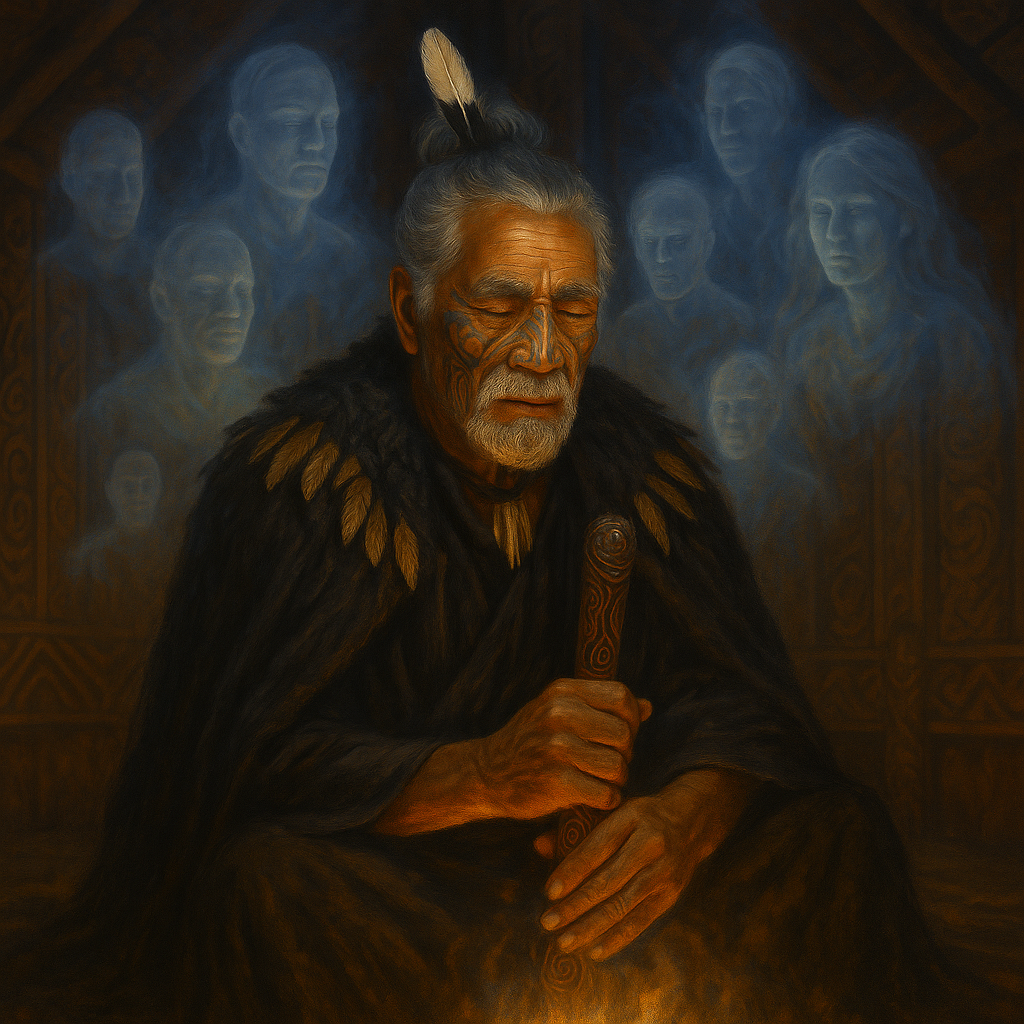Māori Beliefs of Spirit Communication, Mediumship, and Spiritual Dimensions
Introduction
The Māori of Aotearoa (New Zealand) hold a rich spiritual worldview in which the human, natural, and spiritual realms are deeply interconnected. Central to this belief system is the understanding that wairua (spirit) continues after death, and that communication between the living and the spirit world is both natural and necessary.
Like mediumship in other cultures, Māori traditions include individuals who act as intermediaries between the seen and unseen worlds. These practices reflect a cosmology of multiple spiritual dimensions, where ancestors, gods, and the living maintain constant connection.
The Māori Worldview: Wairua and the Spiritual Realms
In Māori spirituality, every person has a wairua (spirit) that exists beyond the physical body.
Before Birth and After Death: Wairua exists before birth, enters the body at conception, and survives after death.
Te Ao Wairua (The Spirit World): Spirits travel to the ancestral homeland of Hawaiki after death, crossing through sacred sites along the way.
Interconnected Realities: The physical world (Te Ao Mārama, the world of light) and the spiritual world (Te Ao Wairua) are inseparable, constantly influencing each other.
This cosmology creates a framework for understanding mediumship as the bridging of two interwoven dimensions.
Spirit Communication and Mediumship
Māori traditions include several forms of spirit communication:
Tohunga (Spiritual Experts): Tohunga acted as healers, diviners, and mediums. They could communicate with ancestral spirits and atua (deities) to receive guidance.
Karakia (Incantations): Sacred chants invoked spiritual presence, opened pathways to the ancestors, and enabled dialogue between realms.
Dreams and Visions (Moemoeā and Matakite): Spirits often visited through dreams, offering warnings, teachings, or prophecy. A matakite (seer) could perceive the unseen directly.
Possession and Voice: At times, spirits could speak through a medium, delivering messages to family or tribe.
In these practices, mediumship ensured the living remained aligned with spiritual law, ancestral guidance, and community wellbeing.
Dimensions of Māori Spirituality
Māori beliefs recognize multiple overlapping spiritual dimensions:
Te Ao Mārama (World of Light): The physical, everyday world.
Te Ao Wairua (Spirit World): Realm of ancestors, spirits, and atua, accessible through ritual and vision.
Tapu and Noa: The spiritual states of sacredness (tapu) and everyday balance (noa) that regulate human interaction with unseen powers.
Ancestral Presence: Ancestors remain active, not distant, guiding and protecting their descendants in the present moment.
Mediumship practices—through tohunga, matakite, and ritual—helped navigate these dimensions.
Techniques of Spirit Contact
Māori spiritual practices developed unique techniques for contacting the spirit world:
Sacred Spaces (Wāhi Tapu): Certain locations, such as burial caves, rivers, and mountains, were portals between worlds.
Karakia and Ritual: Invocations and offerings maintained the bond with spirits and ensured safe communication.
Tā Moko and Symbolism: Body markings and symbolic art expressed spiritual identity and links with ancestors.
Community Ceremony: Spirit communication was often collective, reinforcing tribal identity and spiritual law.
These practices demonstrate that mediumship was not an isolated act but a communal and sacred responsibility.
Comparisons with Western Mediumship
Māori mediumship shares similarities with Western Spiritualism, but also has important differences:
Shared Elements: Trance, visions, communication with ancestors, healing, and prophecy.
Differences: Māori mediumship is always rooted in whakapapa (genealogy), land, and tribal obligations. It reinforces collective identity rather than individual evidence of life after death.
This makes Māori spirit communication a culturally integrated system of mediumship, inseparable from community and cosmology.
Continuity in the Modern World
Despite colonization and suppression of traditional practices, Māori spiritual traditions remain strong. Mediumship continues in:
Marae Ceremonies: Communal gatherings where ancestral presence is invoked.
Contemporary Matakite: Seers and healers continue to guide communities today.
Blended Traditions: Many Māori combine ancestral practices with Christianity, maintaining wairua traditions in new forms.
The resilience of these practices shows that spirit communication remains central to Māori identity and spirituality.
Conclusion
Māori beliefs about spirit communication, mediumship, and spiritual dimensions reveal a worldview where the living and dead remain in constant relationship. Through tohunga, matakite, ritual, and dreams, Māori communities have maintained an unbroken dialogue with their ancestors and atua across generations.
This living tradition not only enriches our understanding of mediumship but also reminds us of the sacred responsibility to remain connected with spirit, land, and ancestry.

